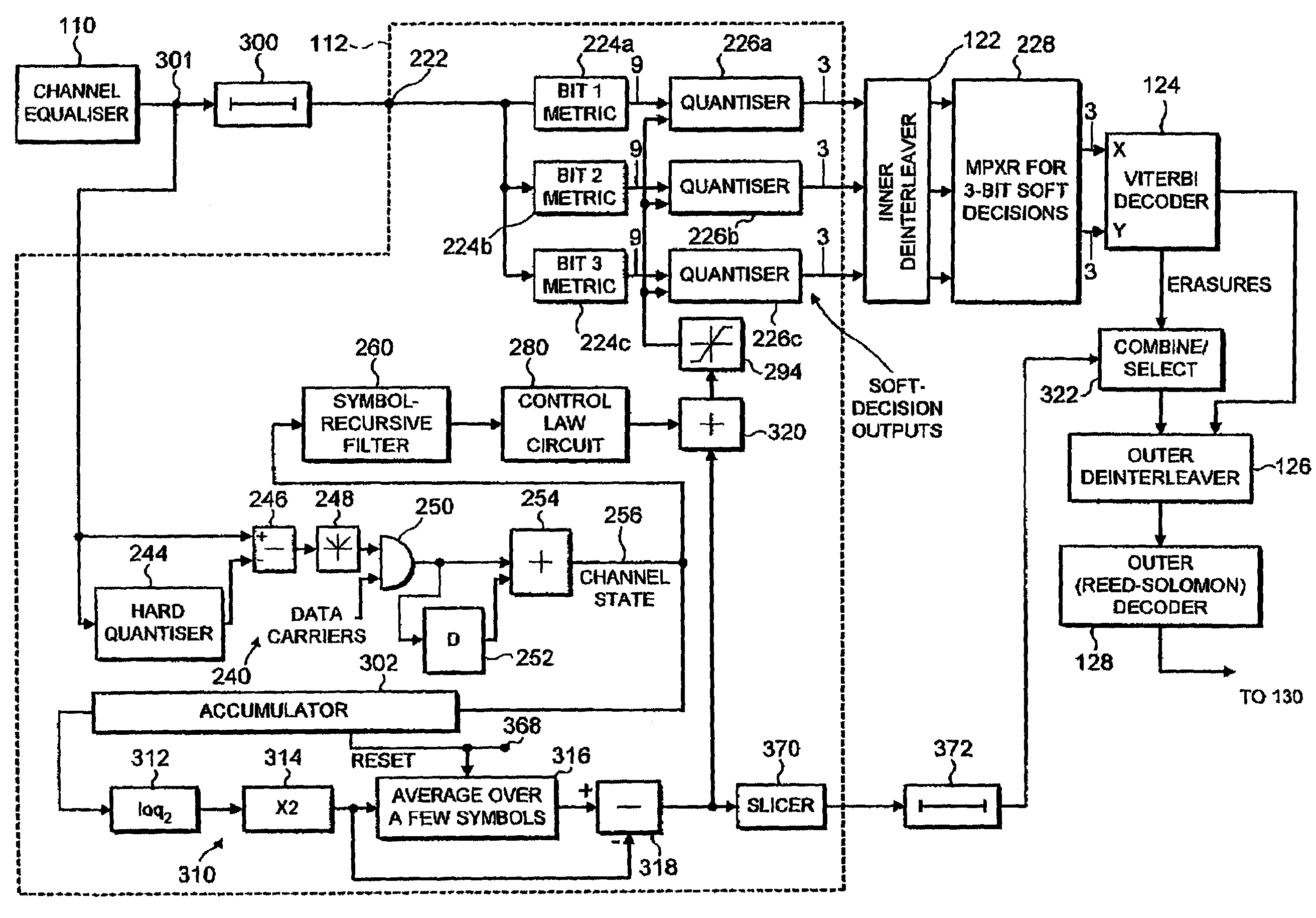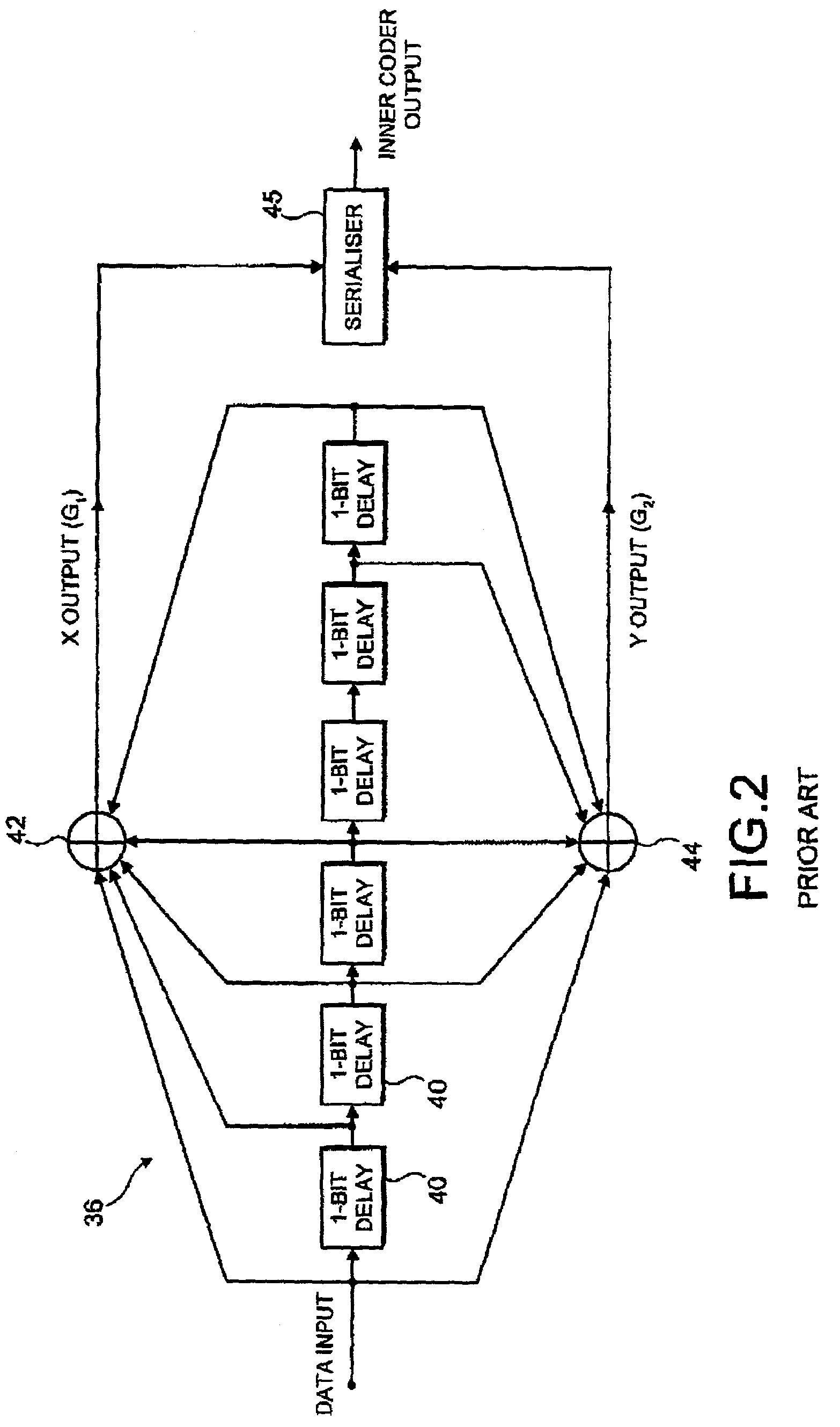Decoders for many-carrier signals, in particular in DVB-T receivers
a decoder and signal technology, applied in the direction of modulated carrier systems, transmission, link quality based transmission modifications, etc., can solve the problems of reducing data capacity, and affecting the operation of the decoder
- Summary
- Abstract
- Description
- Claims
- Application Information
AI Technical Summary
Benefits of technology
Problems solved by technology
Method used
Image
Examples
Embodiment Construction
[0028]The preferred embodiment is implemented as a DVB-T receiver. To enable an understanding of the present invention a description of the principles of a DVB-T transmitter and receiver are first described with reference to FIGS. 1 to 3. A channel state measurement system for use in DVB-T receivers and based on our European Patent Application EP-A-0 991 294 is then described with reference to FIG. 4. Subsequently a receiver embodying the invention in its various aspects is described with reference to FIG. 5 et seq.
DVB-T Transmitter
[0029]FIG. 1 is a block diagram of a transmitter 10 for use in the Digital Video Broadcasting standard for Terrestrial television (DVB-T) as defined in European Telecommunication Standard ETS 300 744 (hereinafter “the standard”). Reference should be made to that standard for further details; the following description is by way of a summary for the purpose of illustrating the present invention.
[0030]The transmitter receives video (V), audio (A), and data (...
PUM
 Login to View More
Login to View More Abstract
Description
Claims
Application Information
 Login to View More
Login to View More - R&D
- Intellectual Property
- Life Sciences
- Materials
- Tech Scout
- Unparalleled Data Quality
- Higher Quality Content
- 60% Fewer Hallucinations
Browse by: Latest US Patents, China's latest patents, Technical Efficacy Thesaurus, Application Domain, Technology Topic, Popular Technical Reports.
© 2025 PatSnap. All rights reserved.Legal|Privacy policy|Modern Slavery Act Transparency Statement|Sitemap|About US| Contact US: help@patsnap.com



